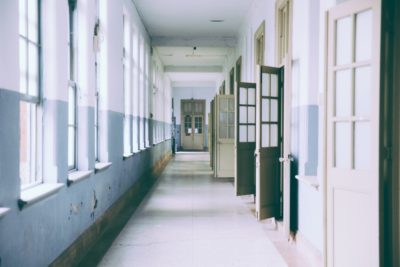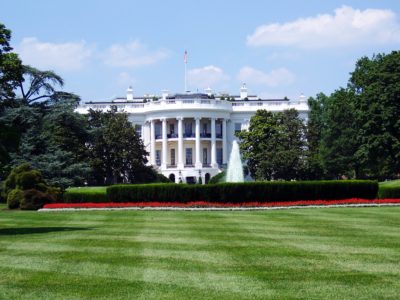

A consensus of politicians and pundits places North Carolina firmly among the key battleground states of the 2020 elections. These are the half dozen or so highly competitive states where Democrats and Republicans will focus intensely in the quest for the 270 electoral votes needed to win the presidency.
North Carolina offers an inviting target for both parties as a result of its recent political performance and its line-up of three high-stakes statewide contests: for president, for the U.S. Senator, and for governor. As the COVID-19 pandemic led to school and business closings across the state, it also held campaigning in suspended animation — at least until now.
North Carolina’s posture as a swing state emerged in 2008 when Democrat Barack Obama carried the state with 49.7% of the vote. In 2016 Republican Donald Trump won with a nearly identical 49.8%.
Even as Trump triumphed in 2016, Democrat Roy Cooper won the governor’s office with 49% of the vote; running for re-election, Cooper now faces Republican Lt. Gov. Dan Forest. In the Senate race, Republican incumbent Thom Tillis makes his first re-election bid under a strong challenge by Democrat Cal Cunningham.
“How North Carolina goes is not just going to determine who wins the White House, but also who controls the Senate,” writes Amy Walter in the widely-read Cook Political Report.
As a battleground, North Carolina mirrors national demographic and economic trends as well as social inequities and political polarization. The state is not simply a “purple’’ combination of Democratic blue and Republican red; it also seems divided into a red state and blue state within a state.
This sketch of an election year’s terrain serves as context for the weighty and complex decisions over when and how to reopen schools and child-care facilities. A state can’t fully restore its economy, dependent on parents with jobs outside the home, until young people return to educational institutions. But the state can’t resume in-classroom education until parents, teachers, and staff feel confident in the schools’ safety.
Since early March, when schools, colleges, and universities pivoted to online instruction, and the governor issued stay-at-home orders, North Carolinians largely complied with public health measures designed to contain the contagious virus. While most remain cautious even as the state has taken modest steps to “reopen,’’ the polarization impulse has proved persistent. A May 9-11 telephone survey of 1,684 North Carolinians by two Duke University research institutes reported “increased polarization’’ in views of the risks of the coronavirus.
Independent national surveys by the Pew Research Center and the Kaiser Family Foundation help illuminate the potentially treacherous public opinion pathways through which education policy makers and administrators must tread. Mask or no mask? Stay in or reopen? How many people respond falls along political lines.
“Democrats are almost twice as likely as Republicans (70% v. 37%) to say they wear a mask ‘every time’ they leave their house, and while most people (72%) think President Trump should wear a mask when meeting with other people, only about half of Republicans (48%) agree,” reports the Kaiser Family Foundation.
“More Democrats (69%) than Republicans (49%) believe social distancing measures are helping reduce the spread of the coronavirus a lot, although strong majorities of both party groups say social distancing is helping at least a little,’’ says a Pew Research report, which also reports that 53% of Democrats express a “great deal of confidence in medical scientists,’’ but only 31% of Republicans do.
It is immensely more challenging in an ongoing pandemic to return to schools than it was to send students home nearly two months ago. The decisions on practical matters are daunting: Masks or shields for students or teachers? Lunch in the cafeteria or at desks? What to do in schools with narrow hallways? What may work in a high school but not in K-3, and vice versa? Will there be enough bus drivers?
Even as they deal with manifold practical challenges, state and county officials have to negotiate through cross-pressures and political realities. In an intense election year, they may not avoid controversy, though they can strive for as much common ground as possible. What they can do is stick to facts, pay attention to the data and analyses of professionals in education, economy and public health, avoid incendiary language, and explain tough decisions with patience and transparency.




